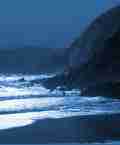 |
Search the site:

Walking Irelandís MountainsThe South-EastThe small mountain ranges of the South-East are with one exception composed of either old red sandstone or Silurian rock. They are somewhat subdued in form but nonetheless surprisingly high, and boast one of Ireland's few Munros (peaks over 914 metres/3,000 feet high). Unusually for-Ireland, all the ranges are outside the ambience of the sea: they mostly rise from rich, well-populated, cultivated land and wide, coniferous plantations. One other general point: the Galtees, Knockmealdowns and the Comeraghs are quite close to each other, none too demanding and have plenty of varied accommodation around them.The South-East extract from Walking Ireland's Mountains continues: The Slieve Blooms (routes 9, 14) are as near the centre of Ireland as any mountain group, so that in good visibility the views from parts of the tops are very wide. Unfortunately, the tops are otherwise of little interest: rolling bogland reaching a height of 506 metres/1,660 feet. The surrounding valleys, through which the waymarked Slieve Bloom Way threads, offer some pleasant walking, though extensive forestry plantations do not improve their attractiveness. Given that there is a modern 1:50,000 map and that facilities in the form of picnic tables are excellent, it is a pity to have to say that the Slieve Blooms are worth a visit only as a break on the way to somewhere else. Lastly in this region we should mention the groups of small and generally subdued and gently sloping hills of north County Tipperary and north County Cork. The Silvermine Mountains of north Tipperary are not very exciting but the Devilís Bit (bite) to their east are indented by a great glacial spillway, a dramatic feature as seen from the N7 (Dublin-Limerick road). The four small ranges of north Cork are centred on the town of Mallow and offer undemanding walking, though one of them, the Boggeraghs, rises as high as 646 metres/2, 118 feet. Access: access to the region is good, with adequate road and rail connections. Cahir, Clonmel, Carrick-on-Suir, Portlaoise (for the Slieve Blooms) and Enniscorthy (for the Blackstairs) have rail stations. The express bus service to (and through) the region is quite good. Clonmel is about 130 kilometres/eighty miles from Rosslare Harbour and 170 kilometres/l05 miles from Dublin. Roads and accommodation: the road system within the region is good and no mountain range is hard to reach. Finding the start of walks in the maze of side roads to be negotiated after leaving the main roads is likely to be the principal difficulty for the traveller by car. There are many good centres close to each of the ranges, with Clonmel in particular well placed for the Galtees, Knockmealdowns and Comeraghs, and Clogheen well placed for the Galtees and Knockmealdowns. Local bus services: these tend to run parallel to the ranges rather than over them. There is, however, an infrequent service close to the Comeraghs and Knockmealdowns at Ballymacarbery and several, some express, close to the Blackstairs at Kiltealy. Maps: the Comeraghs are covered on Discovery Series sheet 75, and this range also has a privately produced 1:25,000 map, but it is rather expensive and therefore not given here as a reference map. The Slieve Blooms are covered by sheet 54, which is one of the first in the modern 1:50,000 series and probably the most unreliable. Coverage of the remainder of the region is only at half-inch (1:126,720). Blind faith in the accuracy of minor roads depicted on these maps in any part of the region is inadvisable. The Knockmealdowns are on one map (sheet 22), as are the Blackstairs (sheet 19). But pity the walker in the Galtees! This range is on two half-inch sheets (18, 22) with the edge of each sheet running along the spine of the range (and there is no overlap between sheets). This gives the Galtees the unenviable reputation of being the worst mapped range in the country.
|
[ Back to Top ]
All Material © 1999-2004 Irelandseye.com and contributors
